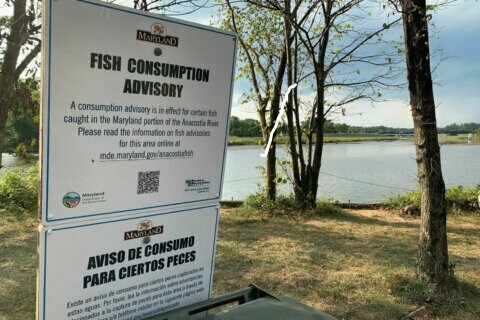Eating Your Catch? Stick With Trout, Avoid Rockfish If You’re Fishing Chesapeake Bay Watershed

Almost half of all game fish in the Chesapeake Bay’s freshwater lakes, rivers and streams may be unsafe to eat because of high levels of mercury, according to a recent study by the U.S. Geological Survey.
The most contaminated fish caught and consumed by anglers, and often found on menus, were striped bass (sometimes called rockfish), followed by walleye, largemouth bass and flathead catfish. Trout seemed to be safest.
The totals varied widely by location, suggesting that local conditions play a large role in the contamination. The Chesapeake Bay watershed stretches from Virginia Beach to Cooperstown, New York.
Locally, Maryland’s fresh water fish fared far worse than Virginia’s. Throughout the study, fish sampled from northern bodies of water had more contamination than those farther south.
The highest concentrations of methylmercury — the most toxic type of mercury for humans — were found in fish in the Susquehanna River, where more than half the basin’s freshwater areas were in the most-polluted tier. The Susquehanna River flows from New York through Pennsylvania and into the Chesapeake Bay in northeast Maryland.
Coal-fired power plants and trash incinerators are the largest source of mercury in the Chesapeake, according to scientists.
In the Potomac River, 18% of its waters ranked in the most-polluted group.
By contrast, at least half of the water bodies in Virginia’s James, Rappahannock and York watersheds were in the category with the lowest mercury levels.
Striped bass — Maryland’s state fish — had the most mercury in its meat, with a typical concentration of 0.31 parts per million. The Environmental Protection Agency set a consumption level for mercury of 0.3 parts per million, according to the Bay Journal, which first published the USGS study.
The fish with the lowest level of mercury included three types of trout and the creek chub.
The USGS study was first published in the scientific journal Ecotoxicology.
As part of Maryland Matters’ content sharing agreement with WTOP, we feature this article from Neal Augenstein. Click here for the WTOP News website.




 Creative Commons Attribution
Creative Commons Attribution